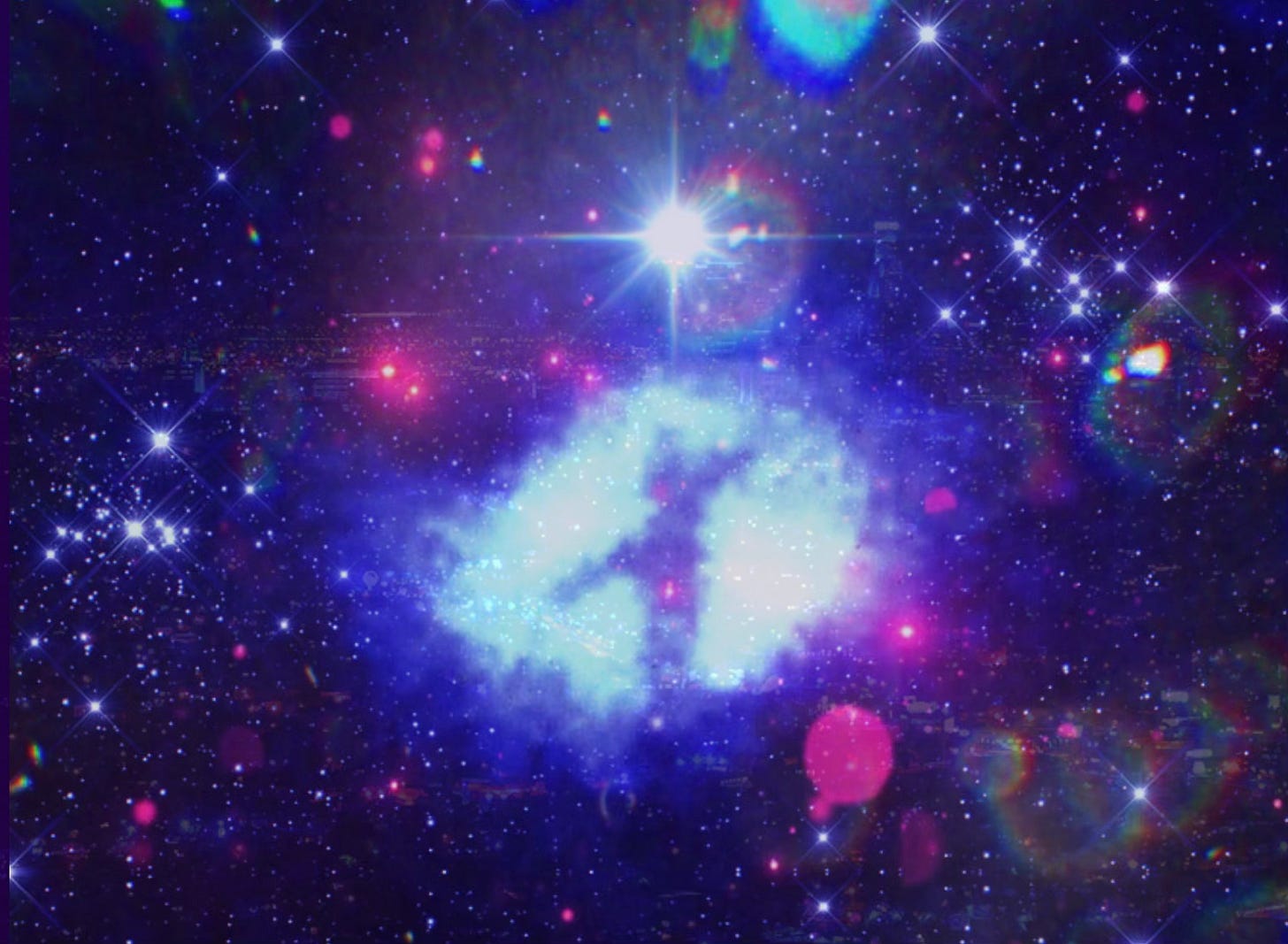No, that's not a dog in your coffee.
How I'm continuing to try to get real and grow wise. Because that matters. Read on about dogs in coffee, Grandad's special powers, and still learning after 60.
Last week, I said I’d post my newsletter on Thursday. But I side-tracked myself by doing life. You can read a short note about that here. It involves clear spring creeks, granddaughters, and Kranskys.
My wife and I have this thing that happens most mornings. When she goes off to work - her office is about 5 metres away from the kitchen - I go make her a coffee.
Stay with me.
I've pretty much mastered the art of extracting a delicious coffee with my little espresso machine.
But one thing I haven't got the hang of is doing what's called 'Coffee art' which is making lovely patterns on top with the milk froth. Any 'art' I try to make ends up looking like I sneezed while copying a Picasso!
So, rather than continually trying to get better at making a flower, love heart or whatever you can get on your coffee at the local cafe, I just make random art with the milk froth.
Then, I decide what the pattern is and go deliver the coffee.
Tess has to guess what the pattern is. Sometimes it's a flower, sometimes it's a sock, and sometimes she has no idea (and neither do I!)
This morning, she took one look at her coffee and said, "It's a puppy licking its paw! See?"
Now, my wife is a very intelligent person. But, does she have a dog in her coffee?
No, she does not.
I checked.
And I know we're only playing a game here but it illustrates a truth about us as human beings. A truth that might be helpful, neutral or hindering depending on how you see it. And the truth is this:
We humans are wired to see patterns.
It's part of our evolutionary makeup that evolved to help us
survive threats
recognise our kin more easily
use less mental and emotional energy to understand things in our environment.
Like, which way to the barbeque.
The problem is that we very easily see patterns where none were created.
Worse, we can convince ourselves (and others) that those patterns show the existence of something that actually isn't there.
Oh dear.
But that's not always a bad thing.
Grandad’s Special Powers
I pick up our granddaughter after school one day a week and as we pull up at the traffic lights, I say, "Watch as I use my special powers to change the lights to green." Then I act as if I can wave my hands at the lights, and guess what... they change to green! Of course, I always say, "See? I have special powers."
I'm pretty sure that's harmless. It's just using imagination that's fun and appropriate to her age. I'd say this an example of when pattern-seeking has a neutral or even helpful impact.
Here's where the notion of seeing patterns that reveal something that isn't there can be a problem.
When you ascribe a pattern to a cause that is incorrect and yet believe, act and speak about it as if it were true. You’re actually leading yourself up a garden path that leads to nowhere.
And it's even more problematic if you're in a position of authority, education or mass communication. Because you'd be teaching others the same (false) thing. Same path, more people.
For example - and I was there when he said it to about 20,000 people one night - the preacher who suggested that the image in the following picture showed that God was putting signs in the sky to remind us of his presence.1
It's perilously easy for us humans to see patterns that we think mean things that in fact are not there.
More examples from other people:
"I saw a light in the sky and I just know it's Dad telling us he's watching over us all the time."
"I asked the Universe for a sign as to whether I should invest in Gyro-currency, and when I opened up the paper, there was an article about it!"
Or, "She's been coming home late a lot recently, and getting lots of texts from people I don't know. She must be having an affair."
If we dive deeper into these examples we'd find various cognitive biases at play, biases that affect our sense of meaning. Some of them are genetic, others come from the culture we grew up in, and others might be down to the expression of our personality.
Regardless, these biases affect how we perceive things.
And this is where it becomes hindering. If we use our precious time, attention and energy on things that either don't matter after all or simply aren't true it can hinder our personal growth, relationships, and experiences in life.
This is what a lot of elderly people say. Imagine being 85 years old and feeling that you didn't do many of the things you wanted to do in life, or you did use your time and energy on things you now realise were unimportant or untrue, and now there's precious little time left.
Awful.
And so, so common by all accounts.
It’s almost like having a winning lottery ticket in your pocket but never realising it and therefore never collecting your $5 million winnings.
So, for me…
As a result of observing, studying and consciously wanting to grow, I accept that I have a very strong tendency to see patterns that may or may not, be true. It's just the way things are. Psychological research has a very large set of well-validated research showing this to be the case.
Without this acceptance, I believe it's very difficult to mature further.
It’s entirely possible to be growing older and yet be psychologically stuck on a set of beliefs that are untested, unsubstantiated, and unhelpful to living well.
A life that matters involves being more real, growing in understanding and maturity, and acting wisely and in ways that are helpful to ourselves, others and the world we all live in.
I feel I cannot help but ask myself, “Is this real? Am I seeing this the best way? Or is there more to learn here?”
What about you?
What questions do you ask yourself?
Please subscribe to this newsletter if you haven’t already done so. It helps me keep motivated. Even better, drop me an encouraging message. :)
For the record, that’s actually a thing called the Hubble Cross and is due to the absorption of light by dust. It marks the exact position of a black hole which may have a mass equivalent to one million stars like the sun. So, not a sign after all.







